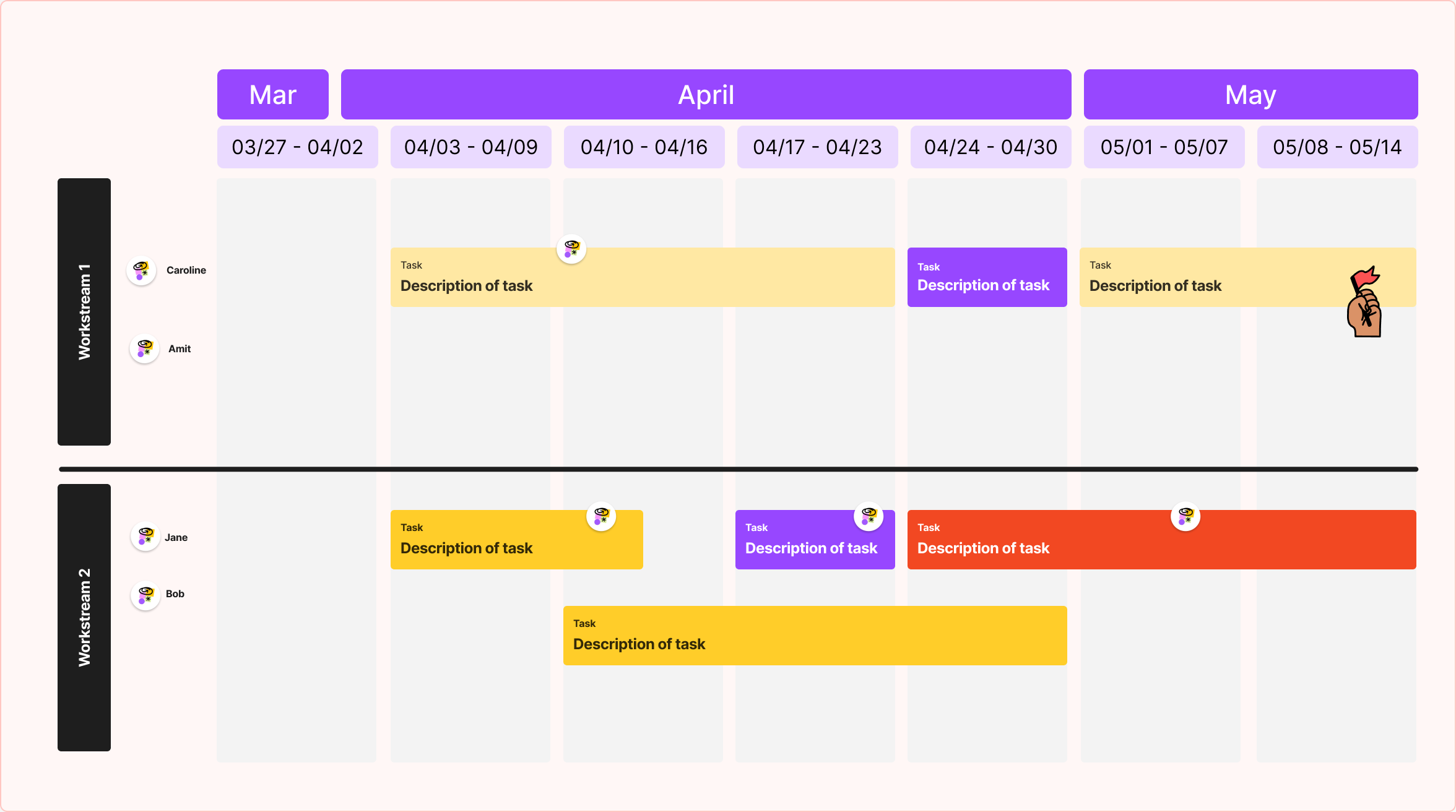
10 Key Factors to Ensure Software Project Success
Written by Mark Coulstring
Overview
- This article discusses the top 10 project success factors for executing successful software projects, that can make or break your project’s success, offering actionable insights for project managers aiming to nail their objectives. Explore these foundational elements to shift your project’s trajectory towards success. Important factors include:
-
Learning from previous project failures and identifying their causes is essential for paving the way to successful future software projects.
-
Employing active risk management and robust project management support is crucial in influencing the overall success of a project.
-
Utilizing project management software to monitor KPIs and maintaining a well-defined project scope are critical success factors for achieving project goals.
-
Time to read: 8 min
Table of Contents +
- Consider End Users and Implement User Testing
- Have Clear Objectives and Specifications
- Hire Experienced Developers
- Have a Plan
- Practice Effective Project Management
- Have Clear Communication
- Focus on your Design
- Implement Risk Management
- Follow Software Development Best Practices
- Do a Final Review and Post-Release Review
UNDERSTANDING FAILURE TO FIND SOFTWARE PROJECT SUCCESS
Completing projects successfully and within schedule and budget can be a very challenging endeavor. Design and development teams around the world struggle to deliver on the demands of their stakeholders, while still retaining their life and sanity. Throughout this blog we discuss the tips for software project processes to keep your project within budget, and what you can do as a developer or stakeholder to successfully complete projects and deliver real value to your users and business.
According to a Standish report, about 31.1% of software projects will be canceled and about 52.7% of projects will cost 189% of their original estimates.[1]
Whether you’re looking to create an app or build a better website for your business, you’ll be investing in a software project. To ensure success with your software project, you want to have a basic plan in place to avoid software projects failure.
Here are 10 key critical success factors that will ensure a successful software project:
#1 Consider End Users and Implement User Testing
One of the best ways to increase your chances of success is to make sure you’re designing and developing for your intended users. This is why it’s crucial to understand the needs of the user throughout the process. When you create a value-driven statement you can identify what solutions your product brings to your target audience. For example, you can write out a statement at the beginning of your project that answers the question of who your product targets and what problem your product will solve for intended users.
![]()
Consider which phase of your project you want to implement user testing. You can use different methodologies depending on where you want valuable user feedback. Conducting user testing before you design can determine whether you have an adequate user interface while conducting it post-build can compare your product to competitors. Make sure that you prepare your participants and testing zone to achieve accurate results.
WHO ARE WE? EXPERT CUSTOM SOFTWARE DEVELOPERS
-
At Seamgen, we have over a decade of experience working with client requests and requirements to determine the best framework for their specific needs. Learn more about our Custom Software Development Services.
-
We identify critical success factors during the planning stages with every project on which we work.
-
USA Design Led Development Agency based in San Diego, CA.
-
We invite you to call us for a free project consultation.
#2 Have Clear Objectives and Specifications
It’s useful to create a product roadmap that lays out a strategic plan for successful projects and highlights your objectives. Be detailed and specific about project objectives and what your team needs to help meet your ultimate goal. Before diving into the software development life cycle, create a value-driven statement to help set a precedent for what your project is, who it aims to target, and what problems it will solve.
Measuring Success: Common KPIs
- Lead Time
- Cycle Time
- Deployment Frequency
- Bug Rates
- Time to Resolve Issues
- User Satisfaction Scores
- Team Velocity
Determining the right key performance indicators (KPIs) is a critical key success factors and crucial for measuring success and ensuring the project aligns with overall business objectives.
Essential KPIs often include critical success factors such as Lead Time (the time it takes to go from project conception to deployment), Cycle Time (the time taken to complete a specific task or set of tasks within the project), and Deployment Frequency (how often new features or updates are released). Monitoring Bug Rates and the Time to Resolve Issues gives insights into the quality of the software and the efficiency of the development process. Additionally, User Satisfaction Scores provide direct feedback on the product's usability and relevance to the end user. It's also important to track Team Velocity, which measures the amount of work a team completes in a sprint, to gauge team productivity and project pacing.
These KPIs, when carefully selected and tracked, can guide decision-making, optimize resource allocation, and ultimately lead to the successful delivery of a software development project.
 Seamgen Pro Tip: Above is an example of an Agile Roadmap Template available for free from Figma. Figma is a planning product we use with every project.
Seamgen Pro Tip: Above is an example of an Agile Roadmap Template available for free from Figma. Figma is a planning product we use with every project.
#3 Hire Experienced Developers
Hiring skilled developers makes for a smooth development process. The investment in senior developers will certainly cost more, but it will save you headaches, time, and money in the long run.
Cost Range for Software Development
- Huge Company (Hundreds or Thousands of Developers): $385 to $850 per hour
- Big Company (100 to 1000 Developers): $220 to $330 per hour
- Medium Company (10 to 100 Employees): $110 to $220 per hour
- Small Company (2 to 10 Employees): $82 to $137 per hour
- Pro Developer: $100 to $300 per hour
- Newbie Developer: $50 to $75 per hour
Rates sourced from Fullstack Labs[2]
You should make sure each team member understands their roles and responsibilities for the project. Assigning project roles will give you the confidence that the team can complete the project effectively.
Typical Software Development Team Structure
-
Product Owner: Responsible for defining project goals and prioritizing tasks.
-
Scrum Master / Project Manager: Facilitates the Agile process, ensuring the team adheres to Agile methodologies.
-
Development Team Members: This group includes software developers, engineers, and programmers who write, analyze, and test the code.
-
Quality Assurance Testers: Ensure the software meets quality standards and functions as intended.
-
UI/UX Designers: Focus on user experience and interface design, enhancing the usability of the software.
-
Business Analysts: Bridge the gap between business needs and technical solutions, providing critical analysis.
-
Technical Architect: Oversees the software's architecture, ensuring it aligns with business requirements.
Also, ensure that your team is following software development protocols and workflows. A project that doesn’t follow best design and development best practices is destined to break or fail in the future. Last but not least, work with a team that is passionate about your product and genuinely cares about the outcome of your project.

#4 Have a Plan
The next tip for our critical success factors is proper planning. Proper planning will ensure that everyone knows exactly what they are responsible for throughout the project. Before you begin working, you should determine the project strategy and approach that will lead you to achieving the end goal. Take the time to figure out which development tools you’ll be using throughout the process and identify the technical architecture that will support your software. This is where a project managers become critical success factors.
Make sure you have all of the following:
- Sprint Plans with Clear Milestones: These are specific, time-bound objectives set within a sprint in agile project management. They help in tracking progress and ensuring that the team is focused and organized towards achieving specific goals within a sprint.
- Application Framework: This refers to a software framework used to implement the standard structure of an application for a specific development environment. It simplifies the development process by providing foundational elements.
- Code Reviews: A practice where peers review source code to find mistakes overlooked in the initial development phase, improving the overall quality of software.
- Automated Testing: Involves using software tools to run tests on the code automatically, thus reducing the need for manual testing. It helps in quickly identifying defects and ensuring software quality.
- Bug and Task Tracking: The process of using software tools to track and manage bugs and tasks. It helps in organizing, prioritizing, and keeping track of software development issues and tasks.
#5 Practice Effective Project Management
All stakeholders of the project must agree to a set of deliverables and acceptance criteria to avoid scope creep and the accompanying additional costs. A formal agreement between your business and the software development team is a great way to set clear expectations and eliminate any confusion.
You should find a team that uses the agile project management methodology, which develops software with an iterative approach. To ensure that your project is always moving forward, the team should have a good project manager and set clear milestones with hard deadlines.
The software design and development company should have weekly, sometimes daily, internal standup meetings where they discuss what was completed, what will be completed next, and if there are any obstacles hindering their progress.
Seamgen Pro Tip: A typical scrum meeting, also known as a daily stand-up, follows this schedule:
- Duration: Held daily, lasting typically around 15 minutes.
- Purpose: Quick check-in to discuss progress and any obstacles.
- Format: Project team member briefly answers three questions:
- What did I accomplish yesterday?
- What will I do today?
- Are there any impediments in my way?
Client meetings should be scheduled regularly to update your business on the progress of your project. This is an opportunity for your team to provide feedback and clarification to the development team.
#6 Have Clear Communication
Clear communication is critical success factor at the onset of a project. As a client, you should clearly communicate your product requirements and vision for your product. Communicating your needs ensures that the development team builds exactly what you ask for. Document your scope of work to ensure that everyone is on the same page. Clear communication will increase your chances of creating a successful software project.
Clear and consistent agreement is the backbone to a successful software project which helps to ultimately avoid confusion, delays, and mistakes. Regardless of the stage of the project, communication plays an integral part. Whether it’s understanding concerns, achievements, or ongoing project updates, there should be a dedicated communication channel (i.e. Slack, Skype, Email, etc.).
Seamgen Pro Tip: A typical set of collaboration tools in a software company can include:
- Slack: For instant messaging and team communication.
- JIRA: Project management tool, particularly for tracking development tasks and bugs.
- Confluence: For team collaboration, document sharing, and knowledge management.
- GitHub or GitLab: For version control and code repository management.
- Trello: Visual tool for organizing tasks and projects using boards and cards.
- Google Meet, Zoom or Microsoft Teams: Video conferencing tools for meetings and remote collaboration.
#7 Focus on Your Design
During the design phase, the UX designers should create a detailed design document that specifies the techniques and tools that support your product goals. The software developers should then review the document to correct technical changes. The design is the blueprint for what is going to be built. It may take a few test runs to find the right design. This is why it’s important to have testing and improvement phases throughout the development process. You should have an excellent team of UX designers that prioritize the user experience. They’ll need to have some technical tools such as wireframing and prototyping tools for user flow mock-ups.

Wireframes and visual compositions are critical for your project’s objective. To create a software project such as a website or a mobile app, you’ll need to begin by creating wireframes which show picture representations of information and features. Wireframes are valuable as they help you visualize a general layout of your website or app. They are also used to define specifications and obtain approval from clients. Wireframes can supplement visual comps as these mockups go a step further to provide a visual representation of your product. Other diagrams that provide value to your project planning process are flowcharts which help define the workflows by providing clear visual models of what a programmer will code.
#8 Implement Risk Management
Let’s face it. Things always go wrong, so you should try to fail as gracefully as possible. To do so, create a risk log with action plans to mitigate and tackle risks early on in the process. The software development team should create a plan to confront risks and inform clients about potential problems.
You should identify any project risks beforehand that might emerge and then analyze the potential impact it might have on your overall project budget, scope, and quality. Implement the proper risk and project management tools to mitigate any risks and prevent derailing your project.
Seamgen Pro Tip: An example process for implementing risk management in a software project might typically involves the following steps:
-
Risk Identification: Identifying potential risks that could impact the project.
-
Risk Analysis: Assessing the likelihood and impact of each identified risk.
-
Risk Prioritization: Prioritizing risks based on their potential impact and likelihood of occurrence.
-
Risk Mitigation Planning: Developing strategies to mitigate, avoid, transfer, or accept risks.
-
Implementation: Putting the risk mitigation plans into action.
-
Monitoring and Review: Continuously monitoring risks and reviewing mitigation plans for effectiveness.
#9 Follow Software Development Best Practices
It’s crucial for your team to follow software development best practices. The development team should abide by the guidelines of coding standards. Source control is another vital component as it allows you to manage the changes to your code and provide a centralized source for your code.

Some other modern development practices include continuous integration (CI) and continuous delivery (CD). CI is a preparation aimed at getting regular updates as quickly as possible to get fixes to users. There’s a huge emphasis on automated testing to validate the changes made throughout the process. CD extends the process of CI as it allows you to deliver changes to your customers.
Before moving into the launch process of your application, the software development team should have a code review. Code review is an integral phase of your software project that will help you identify any bugs and defects. Code review ensures that software developers are following best practices while making sure the whole team has reviewed the code.
Example Azure Web App Project CI/CD Pipeline
#10 Do a Final Review and Post-Release Review
Don’t leave your release planning until the very end. At the beginning of the project, you should test your system with the setup and data that are as close to production as possible.
Once you’ve done all this and completed your final acceptance tests, it’s onto the next step, deployment. The deployment process is customized based on your project’s specific requirements. Your operations team should review, confirm, and approve the deployment documentation. Then, when you release the product, you should analyze and reflect on what went well and what didn’t throughout the project cycle. This will help your team adjust performance accordingly for the next project.
Ready to start your software project? We have a dedicated team here at Seamgen to help ensure critical success factors are in place for your software project. Contact us today to discuss future projects so we can help make your ideas become a reality!

Marc Coulstring
VP of User Experience, Seamgen
Marc, our Vice President of User Experience at Seamgen, is a seasoned expert with a rich background from prominent engagements with clients such as CVS, Aetna, and Intuit. With 12 years under his belt in UX/UI design, from web development to mastering front-end technologies like HTML, CSS, and JS, he has consistently demonstrated superior skills and leadership in the dynamic world of digital design and strategy.
References
- The Standish Group, The Curious Case of the CHAOS Report 2009 (10/10/2021)
- Fullstack Labs, Software Development Price Guide & Hourly Rate Comparison (1/12/2024)








